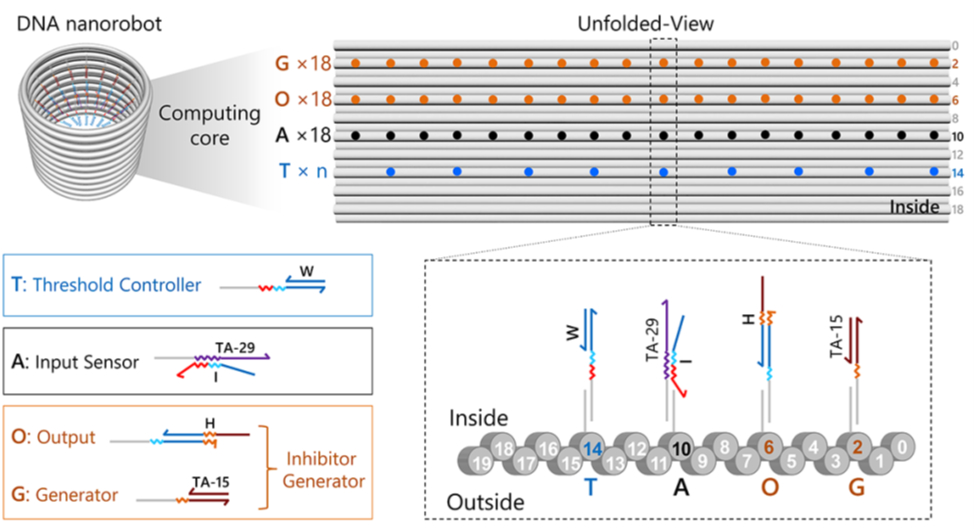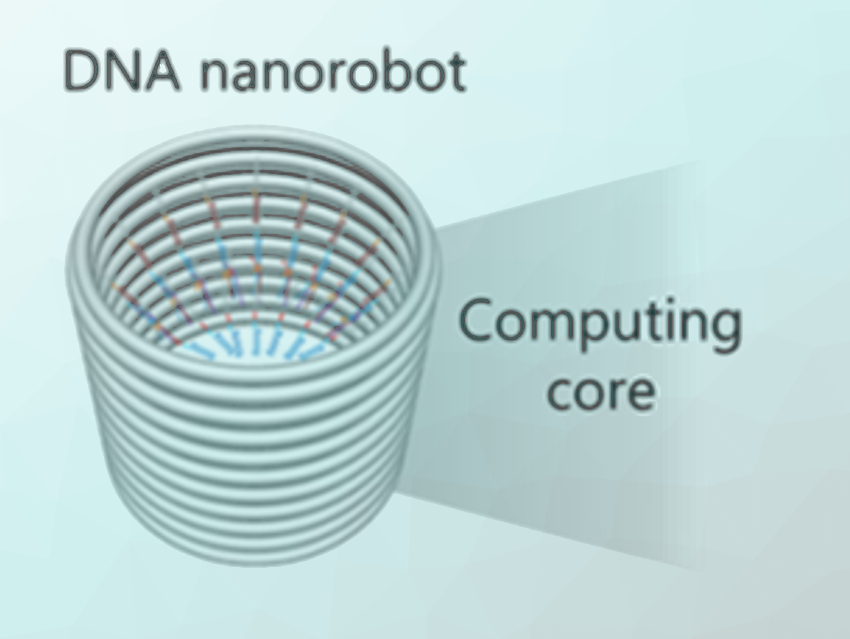Thrombin is an enzyme that is important for the formation of blood clots. Imbalances in thrombin levels can lead to serious health problems in humans. Therefore, controlling the dosage of “blood-thinning” thrombin-regulation drugs is important in medicine. Imprecise dosage can lead to severe side effects, such as blood clots that block vessels (when the dosage is too low) or bleeding (when the dosage is too high).
Da Han, Shanghai Jiao Tong University, China, and colleagues have developed an intelligent nanorobot for autonomous anticoagulation (the prevention of blood clots) in human plasma. This nanorobot can sense the concentration of thrombin in its local environment and trigger anticoagulation when too much thrombin is present. It consists of a barrel-shaped DNA nanostructure as the framework and several DNA-based modular components as an embedded “computing core” (pictured).
The nanorobot has three functional modules—the “input sensor”, the “threshold controller”, and the “inhibitor generator”:
- First, the nanorobot senses the amount of thrombin using its input sensor A (see picture below). It consists of the aptamer TA 29, partially bound to a piece of single-stranded DNA (ssDNA). Aptamers such as TA-29 are oligonucleotide or peptide molecules that bind to a specific target molecule, in this case, thrombin. The ssDNA is released upon thrombin binding and serves the signal I. The amount of I released is proportional to the concentration of thrombin.
- The threshold controller T consists of a DNA duplex strand and is used to set the concentration at which the nanorobot triggers its anticoagulation function. The I ssDNA released in the last step reacts with T, forming inert DNA waste W. At high concentrations of thrombin, and thus, high amounts of I, I reacts with all of the available T. The excess I left over after the reaction then triggers the anticoagulation.
- To trigger the anticoagulation effect, the inhibition generator module is used. It consists of two DNA duplexes, output O and generator G. Excess I from the last step reacts with O and releases another ssDNA H. This ssDNA can, in turn, react with G and release the thrombin inhibitor TA-15, which causes the desired anticoagulation effect.

Intelligent anticoagulation was demonstrated in vitro, both in buffer solutions and in human plasma. However, the system needs further optimization in plasma. The trigger concentration can be set arbitrarily by changing the content of T. This could make the nanorobot useful for autonomous anticoagulation in various medical scenarios.
- An Intelligent DNA Nanorobot for Autonomous Anticoagulation,
Da Han, Linlin Yang, Yumeng Zhao, Xuemei Xu, Kangli Xu, Mingzhi Zhang, Kui Huang, Huaizhi Kang, Hsiao-chu Lin, Yang Yang,
Angew. Chem. Int. Ed. 2020.
https://doi.org/10.1002/anie.202007962




